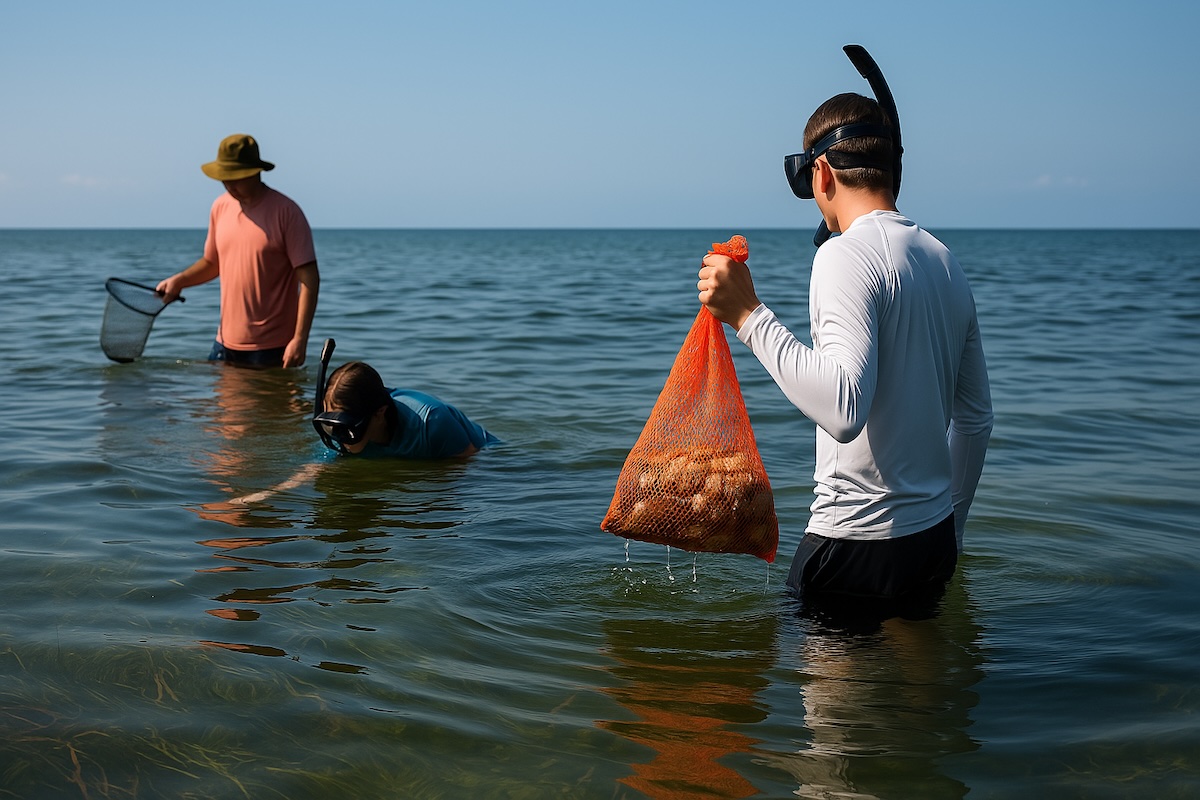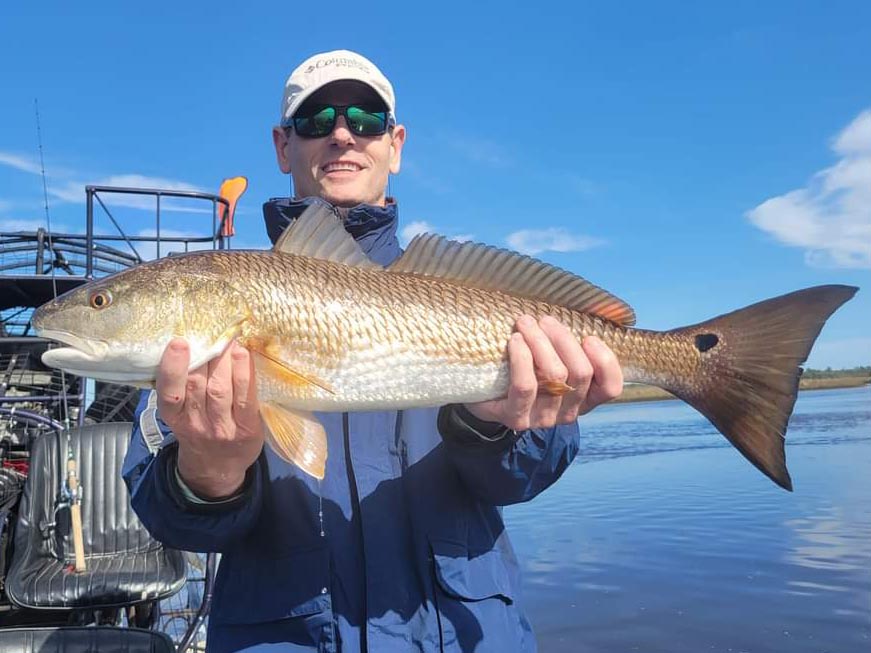Apalachee Bay and Florida’s Big Bend Coast support one of the most ecologically intact and diverse inshore fisheries in the Gulf. This region’s shallow flats, oyster-studded shorelines, mud-bottom creeks, and marsh outflows host a wide range of species that shift across habitats based on tides, seasons, water clarity, and forage patterns. Fishermen working these waters encounter fish that are highly mobile, frequently crossing from grass flats to creek mouths to sandy troughs, often within the same day. Understanding this fluidity is key to successful fishing in the Big Bend.
Common Inshore Species
The following species are consistently found throughout Apalachee Bay and the surrounding Big Bend coastline. Most occur across multiple habitat types and are available throughout much of the year, with periods of peak activity tied to seasonal changes.
-
Spotted Seatrout – Present across shallow and mid-depth grass flats, often concentrated in 2 to 6 feet of water with consistent seagrass coverage. Active throughout spring and fall, with larger fish often staging near sandy potholes or deeper channels during warmer months. Targeted with soft plastics, suspending plugs, or live bait under corks.
-
Redfish – Found across nearly all inshore habitats, including flooded grass flats, marsh edges, oyster bars, and creek mouths. Common in very shallow water during incoming tides. Readily strike spoons, soft plastics, cut bait, or shrimp presented near structure or moving water.
-
Flounder – Ambush feeders that prefer transitional zones—grass and sand edges, creek mouths, or the down-current sides of oyster bars. Found in flats, channels, and nearshore edges, especially in fall. Respond well to slow presentations near bottom.
-
Black Drum – Located near oyster reefs, deeper creek channels, and muddy points with shell bottom. Smaller fish travel in schools similar to redfish; larger individuals are solitary. Best targeted with crustacean baits on the bottom, especially in cooler months.

-
Sheepshead – Found around oyster bars, bridge pilings, rocky shorelines, and any structure with barnacle or shell growth. Concentrated in late winter and early spring during their spawning period. Known for cautious bites and strong fights relative to size.
-
Spanish Mackerel – Appear in spring and remain through early fall, moving in with baitfish schools. Found over open grass flats, near sandbars, and around points where current concentrates small forage. Respond best to fast-moving spoons or jigs.
-
Bluefish – Often travel in the same areas as mackerel and trout, particularly in warm months. Short bursts of aggressive feeding are common when baitfish are present.
-
Ladyfish – Highly active and often mixed in with other open-water species during tidal movements. Frequently caught over grass flats and at the mouths of larger creeks.
-
Jack Crevalle – Travel in mobile schools across grass flats and into backwater creeks. Known for chasing bait violently and striking topwater baits with speed and power.
-
Mangrove Snapper – Found inshore during warmer months near rocks, pilings, and dock structure. Also found along deeper creek bends with good tidal flow. Targeted with live shrimp or small baitfish.
-
Gulf Kingfish (Whiting) – Found in sandy troughs, channel edges, and nearshore transition zones. A dependable species for bottom fishermen using cut bait or shrimp.
-
Pompano – Present in the warmer season, particularly near sandy drop-offs and inlet mouths. Best caught on small jigs bounced across clean sand.
-
Cobia – Occasionally move into shallow bays in spring, especially shadowing stingrays or traveling near markers. Opportunistic and curious, often caught by sight-casting with live bait or jigs.
Seasonal and Environmental Considerations
Water temperature, clarity, and tide cycles strongly influence inshore fishing success in this region. Spring and fall are transitional seasons when multiple species are active at once. In summer, high water temperatures may push fish to deeper grass edges or moving water near creek mouths. Winter brings clearer water and often concentrates fish near structure with slightly warmer bottom conditions.
Tide movement is critical across all species. Rising tides flood feeding areas across flats and shorelines, while outgoing tides pull bait from creeks and marshes into deeper cuts. Fishermen who understand these patterns can intercept multiple species by adjusting location and presentation as conditions change.

Scalloping Along the Big Bend
In addition to finfish, Florida’s Big Bend offers seasonal scalloping opportunities that draws both recreational and subsistence harvesters. Scallop season typically runs from late June through early September, with variations by county. The best areas are in clear, shallow grass flats between Steinhatchee and St. Marks, where snorkelers can collect scallops by hand. These same areas often overlap with productive fishing zones, making combined trips common and efficient.
Where Opportunity Meets Variety on the Big Bend Coast
What sets Apalachee Bay and the Big Bend region apart is not just the range of species, but the way they interact with the landscape. Redfish tail along grass flats that also hold seatrout. Cobia move through inshore channels alongside jacks and Spanish mackerel. A single shoreline can produce flounder in the morning and black drum on the afternoon tide. This is a fishery shaped by movement, timing, and an understanding of how fish respond to subtle changes in water and weather.
Econfina Sporting Club offers guided access to this system through trips built around precision, local knowledge, and adaptability. These are not pre-set routes or one-species outings. Each day on the water is shaped by conditions, timing, and what the system is offering in real time.
If you are ready to fish with purpose, in a region defined by variety and opportunity, we invite you to book a trip with Econfina Sporting Club. This is where we live, this is where we work, and this is the water we know. Let us show you what the Big Bend can offer.


